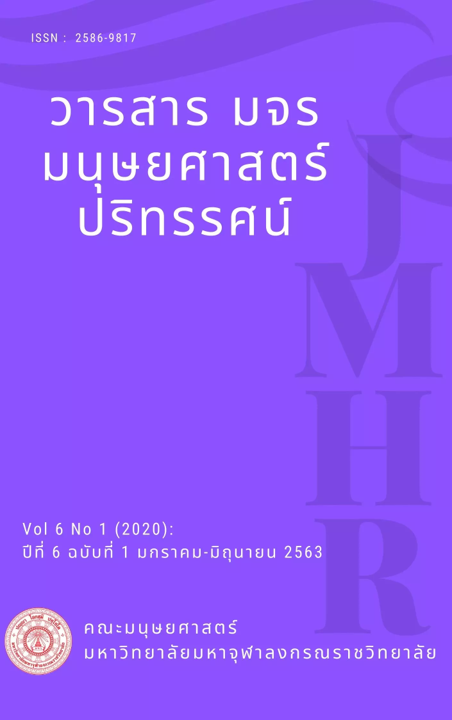Concepts of Sustainability and Live Aability of Green City form Buddhist Perspectives
คำสำคัญ:
Green City, Liveability, Sustainability, Idappaccayataบทคัดย่อ
Cities represent humanity's greatest achievements and greatest challenges. From inequality to air pollution, poorly designed cities are feeling the strain as 68% of humanity is predicted to live in urban areas by 2050. The World Economic Forum supports number of projects designed to make cities cleaner, greener and more inclusive. The latter focuses on how themes such as the circular economy and the Fourth Industrial Revolution can be harnessed to create better cities.
In the 21st century, science and technology will assume increasing importance in society, and new inventions capable of making our cities greener will be developed. Technologies within and across services can generate much greater benefits than can individual technological fixes. Green cities explore their impacts on people’s health, life expectancy, wellbeing and quality of life, with emphasis on healthy living, liveability and sustainability. Moreover, green city concept is one of the latest responses to the diverse efforts and research conducted to address the problems caused by the dispersed model of city development and to help cities to become more sustainable and more liveable. Building green societies and green cities requires well-informed policy choices in favour of sustainable development. Moreover, in Buddhist perspective through the Idappaccayata (the fundamental truth) as the Buddhist Law of Nature for sustainability for community. Buddhism offer with respect to environmental conservation and sustainable development where it has originated and the rest of world.
เอกสารอ้างอิง
Asian Development Bank. (2015). Green city development tool kit. Mandaluyong: Author.
Bouckaert, L. Z. (2011). The Palgrave Handbook of Spirituality and Business. Palgrave: Macmillan.
Bhatnagar, A. (2019). Greenery: the miracle cure for urban living. Retrieved 7th November, 2019, from https://www.weforum.org/agenda/2019/09/greenery-the-miracle-cure-for -urban-living/
Brilhante, O. and Klaas, J. (2018). Green City Concept and a Method to Measure Green City Performance over Time Applied to Fifty Cities Globally: Influence of GDP, Population Size and Energy Efficiency. In Leanne Fan (Ed.), Sustainability. Basel: MDPI.
Buddhadasa Bhikkhu. (2015). Idappaccayata: The Buddhist Law of Nature Bangkok. Bangkok: Buddhadasa foundation.
Davern, M., Billie Giles-Corti, Whitzman, C. and Badland, H. (2019). We must address these 3 factors, to make our cities more vibrant and ‘liveable’. Retrieved 10th November, 2019, from https://www.weforum.org/agenda/2019/09/this-is-what-makes-a-city-liveable/
Jamieson, M. (2013). How do cities become green? 10 best practices of green cities. Retrieved 8th November, 2019, from https://blog.se.com/energy-management-energy-efficiency/2013/05/22/how-do-cities-become-green-10-best-practices-of-green-cities/
Lindfield, Michael and Florian Steinberg. (2012) Green cities. Mandaluyong: Asian Development Bank.
Meredith, S. (2018). Two-thirds of global population will live in cities by 2050, UN Says. Retrieved 7th November, 2019, from https://www.cnbc.com/2018/05/17/two-thirds-of-global-population-will-live-in-cities-by-2050-un-says.html
Phra Brahmagunabhorn (P.A. Payutto). (2013). Dictionaty of Buddhism. Bangkok: Sahadhammik.
Rocco Pace, Galina Churkina, Manuel Rivera. (2016). How green is a “Green City”?: A review of existing indicators and approaches. Postdam: IASS Working Paper.
Rodriguez, L. (2015). A new model for planning sustainable cities. Retrieved 7th November 2019, from https://www.weforum.org/agenda/2015/04/a-new-model-for-planning-sustainable-cities/
Rodriguez, L. (2019). Healthy, Liveable, and Sustainable Communities Can Make a Big Difference in Our Lives. Retrieved 8th November ,2019, from https:// www.Smartcitiesdive.Com/ex/sustainablecitiescollective/healthy-liveable-and-sustainable-communities-can-make-big-difference-our-live/1040316 /#_ edn26






